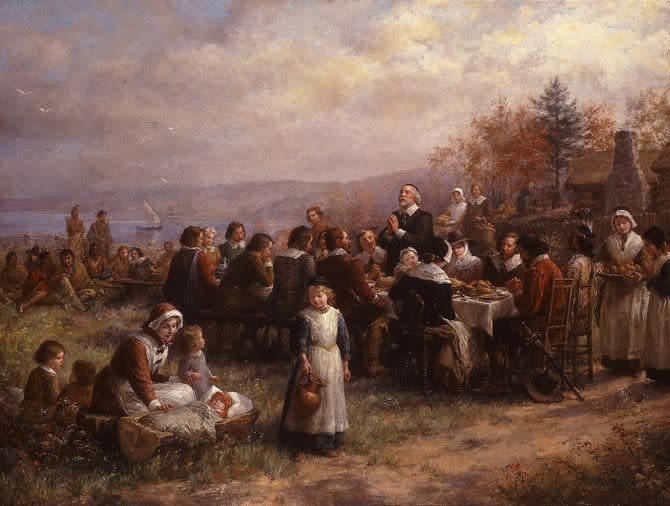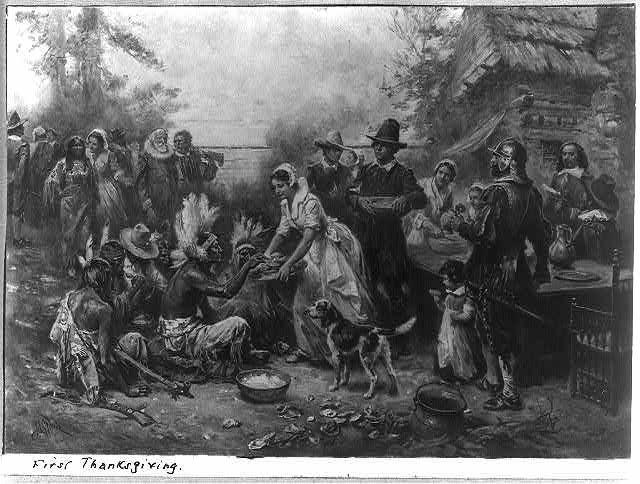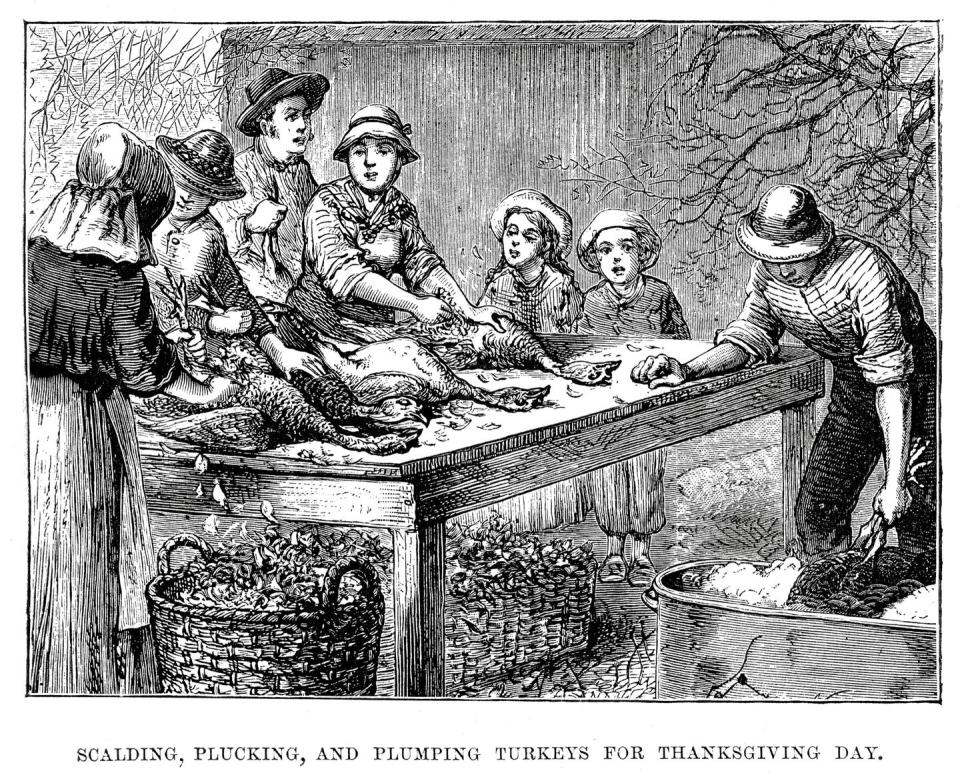Why is Thanksgiving on the Fourth Thursday in November? We've Got Answers

Our Thanksgiving traditions are set. We watch the Macy's Thanksgiving parade, then feast on roast turkey and Thanksgiving pies, then follow that up with more couch time. But why exactly do we celebrate the holiday, and why do we celebrate it on the fourth Thursday of November specifically?
If you can remember your elementary school history class, you probably remember some of the information, but the historical details of what is now a federal holiday might be a bit fuzzy for you by now and recalling them today in 2022 when inquiring little ones ask might be challenging.
Most of what we know about Thanksgiving that was recorded from way back when comes from William Bradford, the governor of Plymouth, Massachusetts, at the time. In Of Plymouth Plantation, a manuscript he wrote, we learn about a fateful feast from the fall of 1621 along with his journey to the New World, settling in Plymouth, and other events from that period.
Here we share what you'll want to know from his manuscript to bring extra meaning to your Thanksgiving recipes, Thanksgiving desserts, Thanksgiving crafts, and even your turkey sandwiches the day or two or three or five after the holiday itself. Knowing more about the roots of thanks in the tradition should increase your own gratitude around this season too, and that might have you Instagramming about it all too. That sure makes for a very happy Thanksgiving!

What is the real story behind Thanksgiving?
Bradford noted in his manuscript that the pilgrims of Plymouth had enjoyed an especially good harvest in the fall of 1621. In honor of their good fortune, they planned a meal to celebrate and give thanks for the abundance of food. The local Wampanoag natives had worked along with the pilgrims to hunt, fish, and gather much of that food—and they'd even taught the pilgrims about many of those tactics in the first place. For that reason, they joined in to give thanks for it all (and yes, there was a cooked fowl dish, noted Bradford, but no mention of pie!).
This peaceful dinner between the Wampanoag and pilgrims may seem a bit dubious to some, given the tensions between the two groups. But it's exactly that concept of two cultures coming together that made the dinner so memorable and important to our country's history. In that same spirit of joining together to give thanks, the tradition of "thanksgiving" would eventually continue in the U.S.

How did Thanksgiving become an official holiday?
By 1789, the "thanksgiving" tradition was still not a holiday. Bradford's manuscript with the actual accounts of that first Thanksgiving had yet to be published, so there was little public interest in the entire thing. And while it's reported that George Washington called for a "national thanksgiving" on the last Thursday of November that year, a declaration like that essentially amounted to a nice, thoughtful idea.
Things still weren't official.
It wasn't until the diary made its way to the hands of magazine editor Sarah Josepha Hale in the 1800s that things began to take shape. Passed down through generations and across centuries, it finally landed in her lap...and Hale was allegedly so moved after reading about the first Thanksgiving dinner that she began a serious letter-writing campaign, urging not one, not two, but five American presidents to make Thanksgiving a national holiday. She never gave up, and eventually lucked out with none other than Abraham Lincoln.
As the Civil War raged on, Lincoln believed that Thanksgiving might help to unite the divided country. He declared it a national holiday in 1863 and kept Thanksgiving as the last Thursday in November. Washington's idea was finally brought to life, and it was at this time that Thanksgiving became a bona fide official holiday on the American calendar.

Is that why Thanksgiving is on the fourth Thursday of November?
Not quite. The story doesn't end there.
On December 26, 1941, President Franklin D. Roosevelt decided to change the date to the fourth Thursday in November instead of the last Thursday. The reasoning behind his decision? On most years, there are only four Thursdays in November in the first place, but on those years when there are five, Roosevelt felt that moving the celebration up a week would be beneficial to the economy. Whatever you say, Mr. President!
These days, the vast majority of Americans celebrate Thanksgiving with a delicious feast among friends and family on that fourth Thursday of November. As for benefitting the economy...well, if stocking up on mashed potato ingredients, cranberries, and apple and pumpkin pie supplies doesn't do the trick, we definitely pull our weight on Black Friday and Cyber Monday.
We'll eat to that!
You Might Also Like

